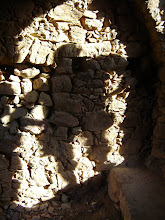The East Riding of Yorkshire is considered by many as a provincial backwater. This
‘riding’ is the least well known of the three traditional constituent parts of
the old county of
Yorkshire. Whereas the
West Riding has the lion's share of the population (with the Leeds-Bradford and
Sheffield conurbations), and the North Riding has the greatest preponderance of
tourist attractions (including the Yorkshire Dales and North Yorks Moors
national parks), the East Riding is thinly populated and geographically off the
beaten track. Apart from the port of Hull and the resorts of Bridlington and Filey, for
many, the East Riding is a blind spot on the map of northern England. But
all of a sudden, things are changing.
VHEY is a
cryptic acronym for the organisation which is responsible for promoting tourism
in the region. In fact, visithullandeastyorkshire.com is the equally
implausible website address. Geographically, the territory that the VHEY
tourist body represents roughly equates to the now defunct East Riding of
Yorkshire (which was swallowed up by newly created North
Yorkshire and Humberside regions in the local government
reorganisation of 1974). It occupies an irregular triangle delineated by an
imaginary line which joins up York, Hull, Spurn Head, Bridlington, Scarborough
and York. The main geomorphological feature are the Yorkshire Wolds, which (for
my Dutch readers) are not dissimilar to the undulating ‘uplands’ of South Limburg. The Yorkshire Wolds mark the most
northerly limits of chalk in Britain
and form a largely homogeneous region of rolling hills, with the Vale of Pickering situated to the north and the
low-lying district of Holderness to the south.
VHEY is now
producing lavishly printed brochures promoting the region as one which ‘could
have been made for cycling, walking, picnics and exploring’. However, the boost to
the tourist trade that VHEY is anticipating is not the result of a dream
marketing campaign, but more indirectly due to the efforts of one of Yorkshire’s
famous sons, David Hockney.
Though born
(1937) and educated in Bradford, as an artist, Hockney is most commonly
associated with California.
It is his stylised and straightforward acrylics of the Californian landscape
and his so-called swimming pool paintings for which he is best known.
Throughout his 60-year career, he has also experimented widely with new
technologies, for example, photographic landscape composites as an
‘investigation of cubism’. Photocopiers, fax machines and – more recently – the
iPad have featured amongst his chosen media.
For much of
the last 15 years however - many would say in the twilight of his career –
Hockney has been capturing images of the East Riding on canvas, whilst also
embracing the opportunities provided by digital technology in this quest. Video
installations are the latest addition to this.
Working
from a studio in Bridlington, a port and seaside resort which lies on the
eastern edge of the Wolds, Hockney has been producing monumental landscape
paintings of various locations in the Wolds, returning at various points
throughout the year to provide immense ‘snapshots’ of the four seasons. Amongst
his most popular locations are Woldgate and Thixendale, but also the village of Bigger, which – as a play on words – was
used as the title of his most recent exhibition of the project, The Bigger
Picture.
Hockney was
invited to stage an exhibition of these works – which in any other mortal’s
book would represent a lifetime’s work, so copious is his output - at the RoyalAcademy in London in 2012, where it attracted record
sell-out audiences. The exhibition has since been taken on tour to Bilbao (Guggenheim) and Cologne
(Ludwig Museum).
No wonder
the popularity of Hockney’s fascinating works, which feature the sweeping
vistas, the majestic skyscapes and the rolling hillsides that predominate this
rural backwater have not only been attracting art-lovers, but also the
attention of marketing people keen to expand tourism in the region.
The
exhibition runs in Cologne
until 3 February 2013.










